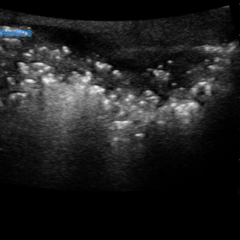Priapism Team-based Learning
ABSTRACT:
Audience:
This classic team-based learning (cTBL) module is designed for emergency medicine residents.
Introduction:
Priapism is a rare but potentially irreversibly damaging condition if not evaluated and treated appropriately.1 Several types of priapism exist: non-ischemic, stuttering, and ischemic. These types are dependent on etiology and pathophysiology of condition. Common causes of non-ischemic priapism are trauma resulting in arteriolar-sinusoidal fistulas, congenital arterial malformations, or iatrogenic insults.1 Common causes of stuttering and ischemic priapism are similar, and consist of idiopathic insults, alpha-agonist medications, and hematological disorders.1 Ischemic priapism leads to compartment syndrome, which needs immediate intervention. Understanding the varying etiologies is important because unnecessary intervention may lead to significant patient morbidity.2 The time course of condition is also a crucial variable to consider when formulating a treatment plan, so understanding a basic algorithm for management will increase rates of detumescence and decrease rates of fibrosis and erectile dysfunction.3 Emergency medicine physicians should feel comfortable evaluating and treating all types of priapism, but due to its low incidence rate, rarely have adequate exposure during residency. This team-based learning module will review the appropriate management and treatment of priapism in an acute setting.
Objectives:
By the end of this cTBL, the learner will: 1) identify basic penile anatomy, 2) understand pathophysiology behind the varying types of priapism – ischemic, non-ischemic, and stuttering, 3) discuss how to evaluate priapism etiology, 4) recognize how varying priapism types, time course, and mechanism of injury will alter treatment regimen, and 5) know how to administer the appropriate treatment.
Method:
This module is a cTBL which consists of pre-class preparation, individual readiness assessment test (iRAT), group readiness assessment test (gRAT), group application exercise (GAE), and a brief wrap-up of session.
Topics:
Priapism, urological emergency, erectile dysfunction, sickle cell disease, perineal trauma, alpha-adrenergic agonists, sympathomimetics, compartment syndrome

